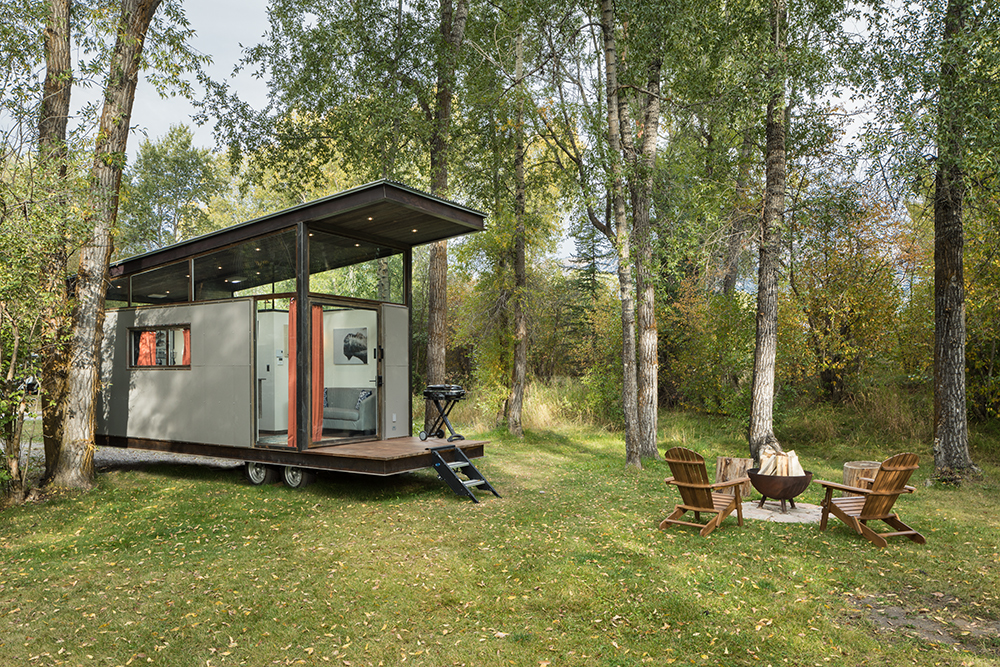Climate change and the depletion of natural resources and the concept of sustainable living has gained significant traction. One remarkable embodiment of this movement is the rise of tiny homes. In this blog post, we’ll delve into the world of tiny homes and explore how they contribute to a more sustainable future. Click HERE to view our current models.
The Allure of Tiny Homes
Tiny homes, typically ranging from 100 to 400 square feet, have captured the imagination of people worldwide. At first glance, their compact size may raise eyebrows, but delve deeper, and you’ll discover a wealth of benefits that extend beyond their diminutive appearance. These benefits include economic savings, simplified lifestyles, and perhaps most importantly, a reduced impact on the environment.
Minimized Resource Consumption
One of the most compelling aspects of tiny homes is their ability to significantly reduce resource consumption. Traditional homes require vast amounts of materials for construction, leading to deforestation, increased energy consumption, and excessive waste. In contrast, tiny homes are designed with efficiency in mind. Their smaller footprint demands fewer materials for construction, thereby conserving natural resources and minimizing environmental strain.
Energy Efficiency and Reduced Carbon Footprint
Tiny homes are inherently more energy-efficient than their larger counterparts. Their compact size requires less energy for heating, cooling, and lighting. Additionally, many tiny homes are equipped with energy-saving appliances and systems, further decreasing their environmental impact. Reduced energy consumption translates to a smaller carbon footprint, contributing to the global fight against climate change.
Promotion of Minimalistic Living
Tiny homes promote a lifestyle that emphasizes quality over quantity. With limited space, individuals are compelled to declutter and reassess their possessions. This shift towards minimalistic living not only reduces consumerism but also curtails the demand for new products. By eschewing the “more is better” mentality, tiny homeowners actively contribute to the reduction of waste and the conservation of resources.
Embracing Alternative Energy Sources
Many tiny homeowners embrace alternative energy solutions to power their dwellings. Solar panels, wind turbines, and rainwater harvesting systems are popular choices within this community. The limited energy requirements of tiny homes make these alternative sources more feasible, enabling homeowners to generate their power sustainably. This movement towards decentralized and renewable energy sources aligns perfectly with the goals of a greener future.
Fostering Stronger Connections with Nature
Tiny homes often encourage a closer relationship with nature. Their compact design often means they can be situated in more natural surroundings, allowing residents to live in harmony with the environment. Additionally, the smaller interior spaces prompt residents to spend more time outdoors, appreciating and connecting with the world around them. This rekindling of our bond with nature fosters a greater appreciation for the environment and encourages sustainable behaviors.
Community Building and Shared Resources
In many cases, tiny homes are built within intentional communities that prioritize communal living and resource sharing. These communities often feature shared gardens, tool libraries, and communal spaces, reducing the need for individual ownership of resources. This sense of collective responsibility and cooperation further contributes to a more sustainable lifestyle.
Final Thoughts
Tiny homes are more than just a fad; they represent a shift towards conscious, sustainable living. As the world grapples with the pressing challenges of environmental degradation and resource depletion, the rise of tiny homes offers a beacon of hope. By embracing minimalistic living, optimizing resource consumption, and fostering a greater connection with nature, tiny homeowners exemplify a way of life that can inspire us all to tread more lightly on our planet. As we look to the future, the tiny home movement reminds us that sometimes, the most impactful changes come in the smallest packages.


